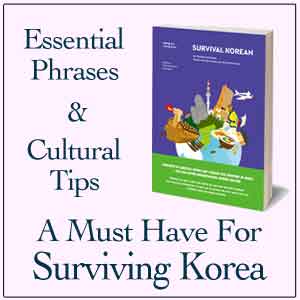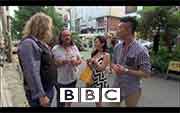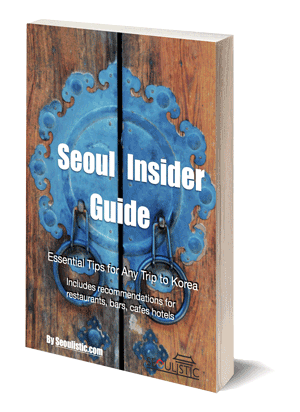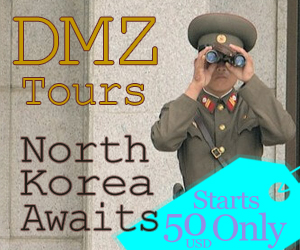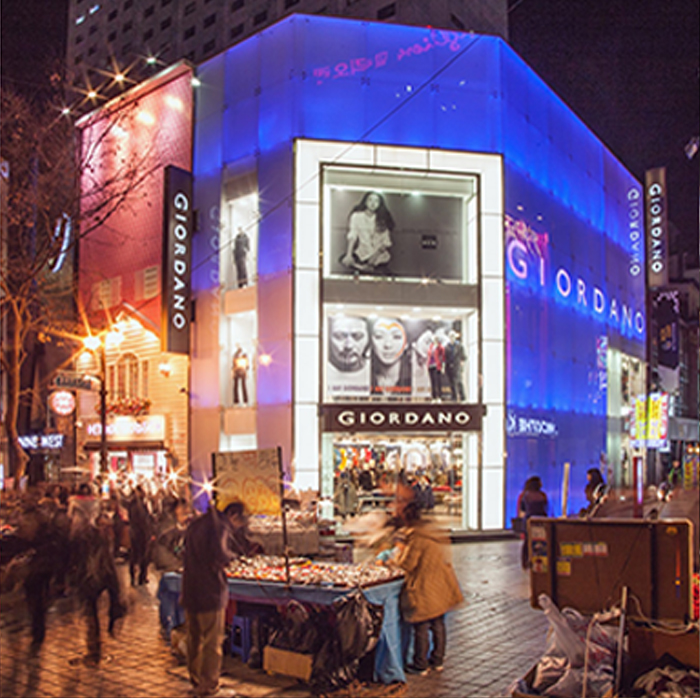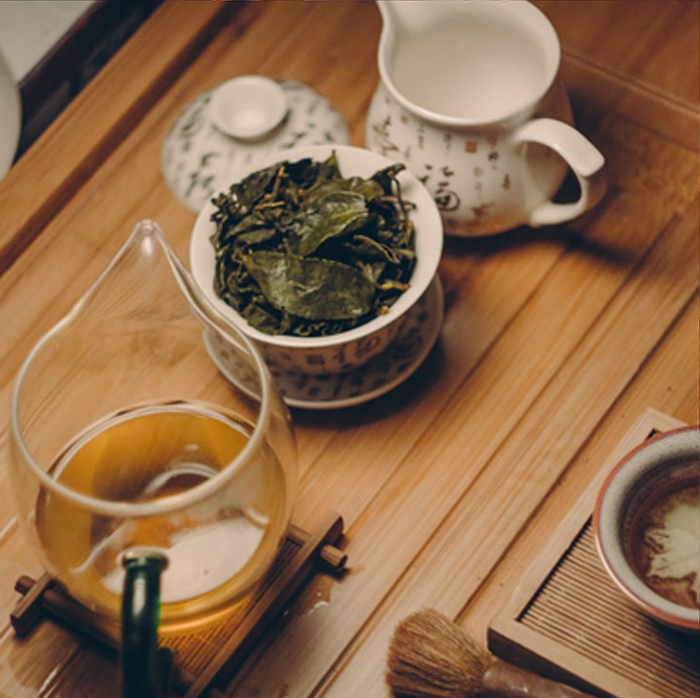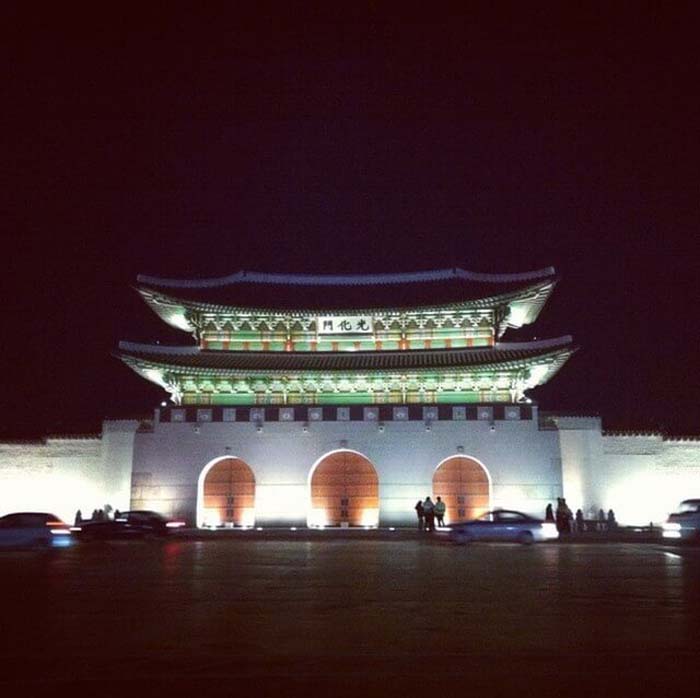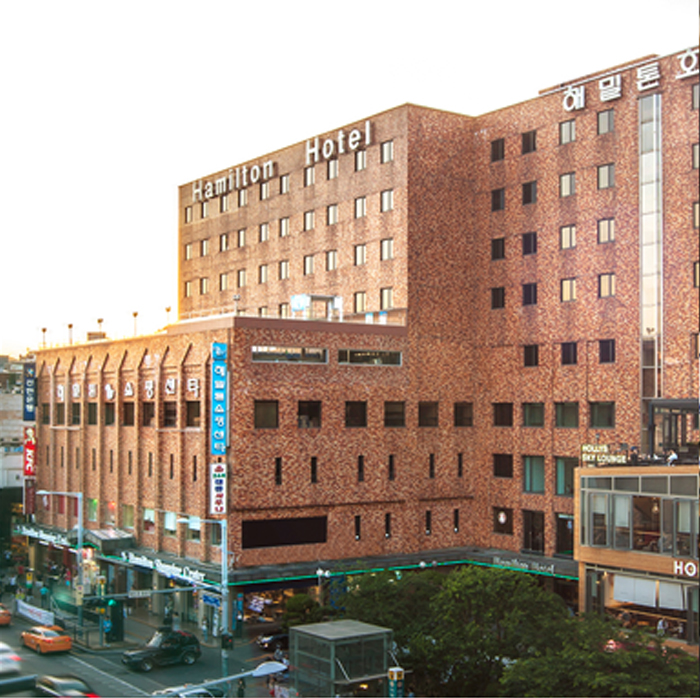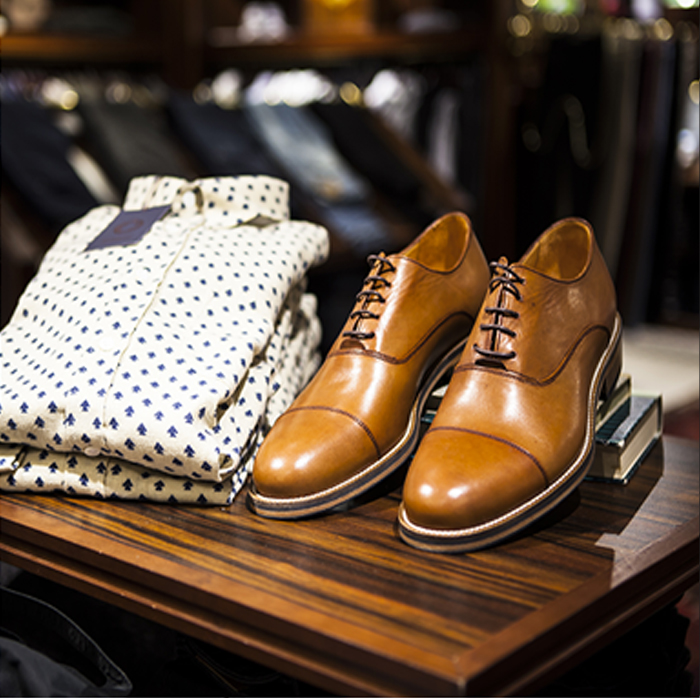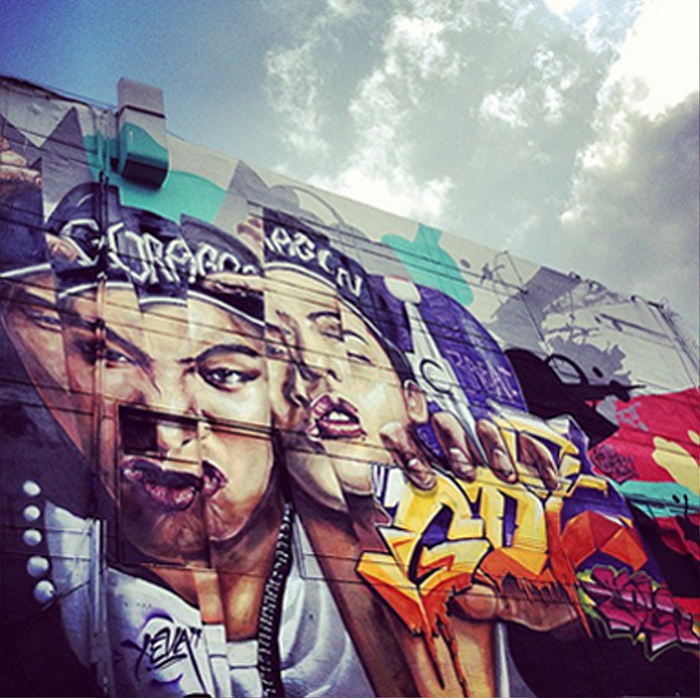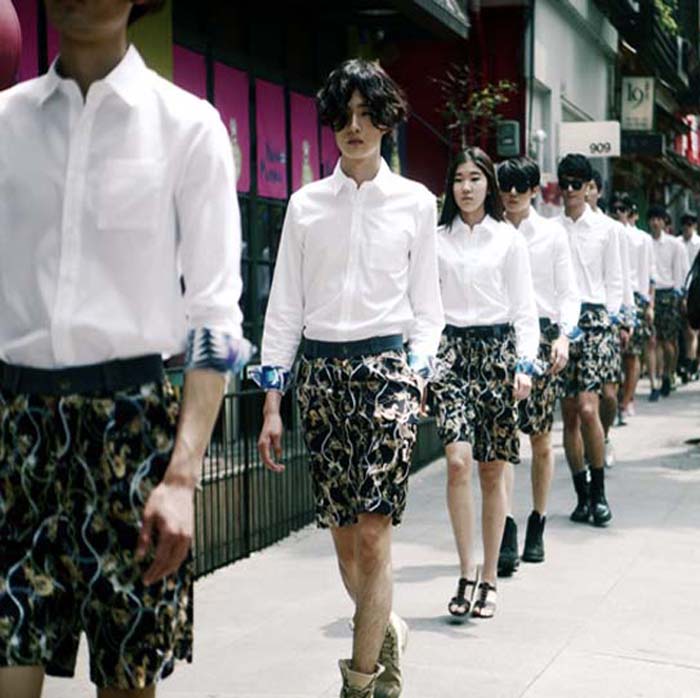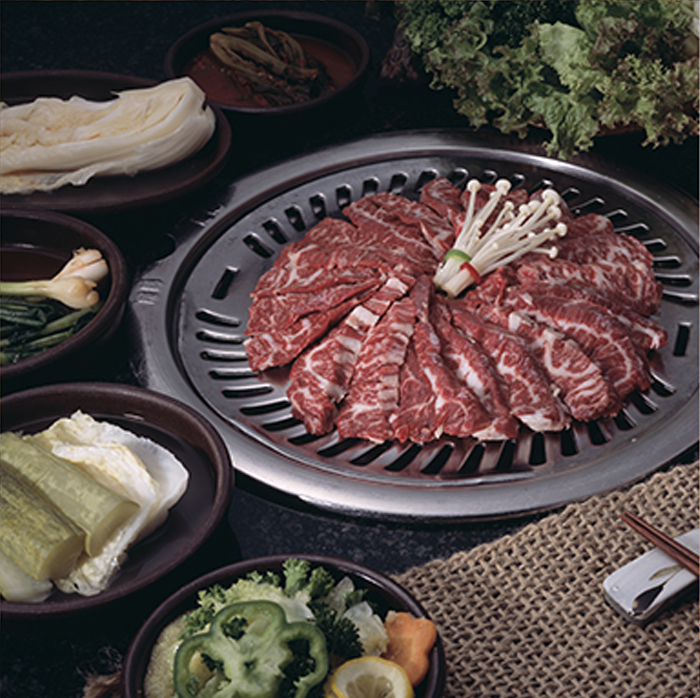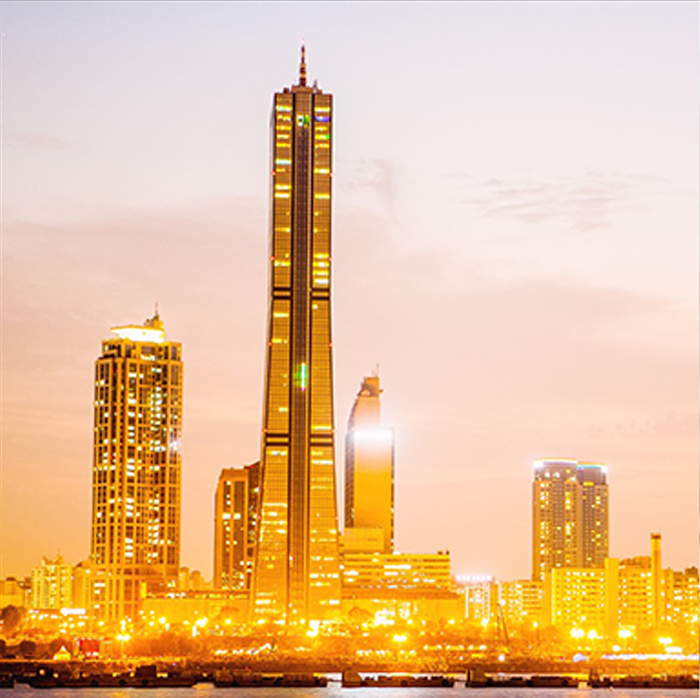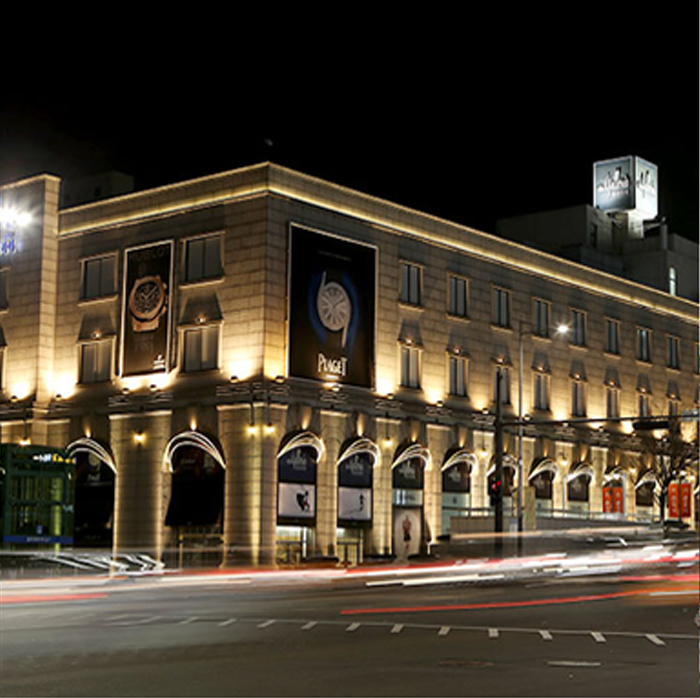Welcome to the Seoul Travel Guide
Here you’ll get a general overview of Seoul
so you can know what to expect when you land in Korea.
Find the best time to come, what happens if you
don't speak Korean, and how to get free wifi in Seoul.
You'll even get tips for taking the subway and
how to not get ripped off by taxi drivers.
If you're looking for specific things to do,
click on the "Do" button in the menu.
The Best Time to Visit South Korea
Korea’s got 4 seasons with weather ranging from hot summer nights to snowy winter mornings with all the good stuff in-between. Of course, with each season there are many different experiences. And that’s exactly what determines is the best time to visit Korea. Here’s a few things you can experience in Korea for all four seasons:
In Winter:
- Winter Sports (skiing, snowboarding, ice skating)
- Fish Market Experience (in season)
- Korean Spa & Traditional Floor Heating (jjimjilbang)
In Spring:
- Flower Blooms (Cherry Blossoms)
- Outdoor Activities (hiking, picnics)
- Comfortable weather (light jacket)
In Summer:
- Beach & Water Sports (Busan, coastal cities)
- Music Festivals (Ultra Music Festival, Jisan Valley Rock Festival, etc.)
- Other Festivals (Boryeong Mud Festival, Film Festivals)
In Autumn:
- Autumn Foliage (best weather for hiking)
- Outdoor Activities (camping)
- Comfortable weather (light jacket)
If you want to know about temperature and what to wear,
here’s what the weather is like in Korea:
January
Coldest time of the year. Some snow and a lot of wind.
- Wear: Everything — hats, gloves, scarves, thermals, heavy winter jackets, etc.
- Average temperature: 1.5°C (34.7°F)
February
Warmer but still cold. Less snow and less wind than January.
- Wear: Winter sweaters, heavy jackets, gloves and thermals.
- Average Temperature: 4.7°C (40.5°F)
March
Start of spring. Comfortable weather.
- Wear: Medium jackets, medium sweaters.
- Average Temperature: 10.4°C (50.7°F)
April
Sunny skies, and comfortable weather. Yellow dust season.
- Wear: Light sweaters, light jackets, some t-shirts.
- Average Temperature: Average 17.8°C (64°F)
May
Best weather. Sunny days and comfortable evenings.
- Wear: Light jacket & t-shirt.
- Average Temperature: 23°C (73.4°F)
June
Hot sunny days and warm summer nights.
- Wear: T-shirts and jeans.
- Average Temperature: 27.1°C (80.8°F)
July
Hot & humid. Monsoon season.
- Wear: T-shirt & shorts.
- Average Temperature: 28.6°C(83.5°F)
August
Hottest and most humid time of year.
- Wear: T-shirt & shorts.
- Average Temperature: 29.6°C(85.3°F)
September
Best weather. Comfortable temperatures both day and night.
- Wear: T-shirt and jeans with light jackets at night.
- Average Temperature: 25.8°C (78.4°F)
October
Light jacket all day, with chilly weather at night.
- Wear: Light sweater & fall jacket.
- Average Temperature: 19.8°C (67.6°F)
November
Chilly and windy weather.
- Wear: Medium jackets and winter jackets.
- Average Temperature: 11.6°C (52.9°F)
December
Start of winter. Some snow and wind.
- Wear: Winter sweaters with winter jackets.
- Average Temperature: 4.3°C (39.7 °F)
Is South Korea Safe?
Most of you asking this question are probably asking about North Korea. Year after year, they always seem to find their way on front pages and headlines. They’re a secretive nation led by an unpredictable dictator who likes basketball and nuclear weapons. Of course they’re in the news; they’re clickbait magnets! But search though all the articles of the last few decades, and you’ll hardly see any actual effect on the general Korean population. There are skirmishes at the border, but everyone away from there barely even pays attention anymore. They’re just the crazy neighbor who’s yelling too loud again. Sure things may happen, but a 60-year track record says nothing probably will happen.
Should you be worried about violent crimes or natural disasters? Click here to find out:
What if I Don’t Speak Korean?
Most young Koreans have studied English from elementary school till university, so generally most younger Koreans will have a decent grasp of English. This is especially true for large cities (i.e. Seoul), and much less true for rural areas. This is also more true for the younger generation than the older generation. So if you’re coming to Seoul even the part-timers at McDonalds will have a basic idea of what you’re saying. Also, you might get lucky if you speak Chinese or Japanese as there are a good number Koreans who study those languages as well.
Survival Korean is a survival guide for you to pick up essential Korean phrases. You’ll also get first hand cultural lessons from Seoulistic’s founder, Keith, who’s lived through all the hardships and put them together in this book. Get these invaluable lessons in paperback or ebook format.
Cultural Tidbits
Korea has a 5,000 year old culture with a strict Confucian hierarchy that rules social norms and behaviors. Basically, if you’re not from here, or you’re unfamiliar with Korea, there’s a lot to catch up on. Here’s a few posts for more cultural tidbits:
Arriving in South Korea
How to get to South Korea, Seoul
Arriving in South Korea, there are several ports of entry; most international travelers, however, will enter through Incheon International Airport. It’s by far the largest port of entry, and the most accessible. It’s also legitimately awesome (consistently ranked in the top 3 airports in the world). (FYI: Incheon is a city on the west coast of Korea, and is approximately an hour away from Seoul)
If you’re in a rush, getting to Seoul from Gimpo Airport will shave off approximately 20 minutes off your time. However, the airport is smaller and serves less airlines, so be sure to check if it’s possible.
Other major international airpots in Korea include: Jeju Airport and Gimhae International Airport (in Busan). Also, seaworthy travelers coming from Fukuoka, Japan can enter Busan via ferry as well.
How to Get to Seoul from Incheon Airport
If you’re want get to Seoul from Incheon Airport, there are several options:
Airport Express Line (AREX Subway)
Best for budget travelers, quickest but least comfortable
The airport express line (AREX) is the most inexpensive way to get to Seoul from Incheon Airport, as it only costs 4,500 won to get from Incheon Airport to Seoul Station. Also, because it’s a train / subway, it’s nearly always on time and you’ll have an accurate time table to estimate how long it’ll take you to get to Seoul. You may not get a seat, and it may be crowded, but they do have luggage storage racks for the ride.
The AREX line makes several stops in the city of Incheon, and arrives in Seoul at the following stations: Digital Media City (40 minutes), Hongik University Station (45 minutes), Gongdeok Station (50 minutes) and Seoul Station (1 hour). Unfortunately, the airport express line doesn’t reach every corner of Seoul. For that you’ll have to take…
Limousine Buses from Incheon Airport
Comfortable, Reaches every corner of Seoul
The limousine buses at Incheon International Airport are the premier way to get to Incheon Airport. They have large, reclining seats that make the trip into Seoul a comfortable change of pace if you came in through economy class. And they drop you off ay nearly every corner of Seoul, saving you a lot of energy if you have to lug the luggage you already regret packing too much for.
They also happen to have great service. Most bus drivers in Seoul never got a customer service certification. But these are premium buses with the best drivers. They’re pleasantly friendly and they’ll even help you with your big luggage full of your Korea haul.
Prices start from 10,000 won and will vary according to destination.
Money and Currency Exchange
About Money in South Korea:
Won (denoted as ₩ or KRW) is the official currency in South Korea. There are four bank notes: the 1,000 won, 5,000 won, 10,000 won and 50,000 won notes, all with various key figures of Korean history (click here to find out who they are).
For those who hate math, you can always subtract 3 zeros for a very quick and very rough estimate into USD (1,000 KRW ≈ 1 USD), barring any economic crises.
Credit Cards vs Cash
Generally, Korea is a credit card country — meaning the majority of transactions are done with credit cards. MasterCard and Visa will be accepted nearly everywhere, Union Pay will be accepted in tourist friendly places (they will have signs outside). Other credit cards types will be accepted with much less frequency.
But Koreans still love cash. Sometimes you can get discounts for using cash. This is more true for services (i.e. classes, massages, gym memberships, etc.) and mom-and-pop shops. If in doubt, you can alway ask.
(Korean: 현금할인 돼요? hyeongeumharin dweyo? - Do you have a cash discount?).
Best Places for Currency Exchange in Seoul
ATM Machines
Generally, ATM machines are the best way to exchange currency in Korea. Even with the small fee, you’ll still be getting the best rates. But not all ATM machines in Korea are created equal. Some ATMs only take domestic Korean cards. Instead, look for “Global ATMs,” which can usually be found in banks at tourist friendly areas.
Exchanging Cash
Just like in most places, currency exchange is the worst at the airport. Instead, head to tourist areas in Seoul like Myeongdong and Itaewon for the best currency exchange rates. Here’s a few specific recommendations (links to google maps):
- The street in front of the Chinese Embassy
- The cackle of mean grannies (near the tourist kiosk)
- This kiosk in Itaewon
Also, if in doubt, don’t be afraid to stop by banks. They give pretty good currency exchange rates as well.
TIP 1: Of course, avoid currency exchange altogether by making purchases with credit cards. You’ll get a much better rate than when converting cash.
TIP 2: Use credit cards for purchases. If you have a problem with a purchase and need a refund, it may take longer than normal to process. You may need cash in your bank account when back home.
Credit Cards vs Cash
Generally, Korea is a credit card country — meaning the majority of transactions are done with credit cards. MasterCard and Visa will be accepted nearly everywhere, Union Pay will be accepted in tourist friendly places (they will have signs outside). Other credit cards types will be accepted with much less frequency.
But Koreans still love cash. Sometimes you can get discounts for using cash. This is more true for services (i.e. classes, massages, gym memberships, etc.) and mom-and-pop shops. If in doubt, you can alway ask.
(Korean: 현금할인 돼요? hyeongeumharin dweyo? - Do you have a cash discount?).
Wifi, Data, Connectivity
Korea is the most wired country in the world. It has the fastest internet, and anywhere you go throughout Seoul, you can find free wifi spots. You’ll never be disconnected if you don’t want to. And one can even survive without buying a sim card or getting a portable wifi router. It’s tough this day and age to be disconnected, but if you want to save some money, here’s how.
Here’s how to get Free Wifi in Korea
Most people in Korea consider wifi a free utility that everyone should have access to. Generally, Koreans freely share their wifi passwords with whoever asks. And some people don’t even bother putting up passwords at all. Walk around with your phone in hand, and you’re bound to come a network you can piggyback off of for a few seconds. Here’s a few places where you’ll see free wifi
- Hotels - This one’s pretty obvious. All hotels in Seoul will offer free wifi.
- Cafes - Pretty much every cafe in Seoul will offer free wifi for customers. Just ask for the password (or check the receipt or signs on the wall).
- Restaurants & Bars - - Most restaurants & bars will be more than happy to share their wifi.
- The City of Seoul - The city of Seoul has setup free wifi throughout the city for travelers and for their own municipal workers. These connections are slow, but they're all over the city. Here's 10,000 free wifi spots in Seoul.
- Amateur Hacking - Most people in Korea use the same routers throughout the country. Some have factory set passwords that many are too bothered to change. If you want to give amateur hacking a try, try out this post: How to Get Free Wifi in Seoul.
Unlimited Data Sim Card
There’s a lot of free wifi in Korea, but it’s still hit or miss. A lot of the free wifi is slow, and if you’re a customer, you’re technically already paying for it with each coffee or meal. If you’d like to be connected so you can message your friends, check your email, and update your Instagram, consider reserving an unlimited data sim card.
Transportation in Seoul
Public Transportation in Seoul
Seoul’s public transportation infrastructure is very extensive, modern and affordable. Most of all, it's very intuitive (especially the subway system), but here's a bit of a primer on the basics to get you started on your traversing Seoul like a local.
T- Money
T-money is a prepaid payment system for Seoul's public transportation system. Without it you’ll have to pay with cash for every fare on the bus, or stop by a ticket vending machine to get on the subway. Here’s some of the benefits:
- Hassle-free pre-pay — charge once for your trip.
- No waiting at ticket vending machines.
- Get 100 won extra for single-use rides
- No need for 500 won deposit like single-use cards
- Discounted transfers between subway and bus rides (within 30 minutes)
- Pay taxis and convenience stores with T-Money too
- Be smooth and cool like a local
Obviously there’s a lot of benefits to getting a card. And we recommend you get one if possible. The only downside is you’ll have to pay for the card itself. Head to any convenience store, and they’ll have basic cards that start from 3,000 won. T-money can also be small keychains as well. If you live in Korea, you can simply use your bank-issued credit card (must be requested before issued).
Charging the card: You can charge the card at any subway station ticketing machines (with English menu). You can also charge at any convenience store as well (credit cards accepted).
Refunding your remaining balance: If you have a remaining balance under 20,000 won, you can head to any convenience store and ask for a refund (-500 won service charge).
(Language: 남은 잔액 환불 해주세요 | nameun janaek hwanbul haejuseyo)
TIP :Remember to “click” your t-money on the sensor when you’re leaving the subway station or bus. This will allow you to get free transfers.
Seoul Subway
The subway is the easiest way for travelers to navigate Seoul. The system is extensive, the signs are intuitive and there’s plenty of English signage and announcements. The transfers within subways are free and when using a T-money card, transfers to and from buses are discounted.
How much does the subway cost in Seoul?
The fares for the subway in Seoul is based on distance.
- Base Fare (First 50km: 1250 won (1350 won without T-money).
- Additional Distance Between 10km and 50km: Additional 100won per 5km
- Additional Distance Over 50km: Additional 100 won per 8km
If you’re bad at math, don’t worry. Ticketing machines will do the math for you before you pay. If you’re using T-money, fares will automatically be calculated and deducted from your T-money card when you exit.
Subway Schedule
The first trains generally start running from 5:30AM and go until 1:30AM. Of course, this is all depends on the station you are at. So be sure to take note of the time using the apps below. If you miss the last train, you can always grab a taxi.
Subway Apps
Kakao Metro App:
Use this app to search for destinations, to calculate distance, and to estimate travel time and price. The English is quite good as well.
Here’s a few helpful articles about the Seoul subway:
Buses in Seoul
Busses are for true locals. Bus routes aren’t as easy to pick up without Korean, and there isn’t much English to help the non-local to get around. But they at the least, they will save you a long flight of steps going up and down a subway station. Also, they’ll make up for subway stations that are long walks away from wherever you are.
There are literally more than a hundred buses in Seoul, each going to their own nook and cranny of the city. So we can't recommend any specific buses without knowing where you are. Instead, we recommend getting the apps below, and watching out for the color coded buses before for a better understanding of where they're going.
Buses are color coded for distance and price.
- Red buses - express buses that travel from Seoul’s satellite cities (i.e. Incheon, Bundang, etc.) to major downtown transportation hubs like Gangnam Station or Myeongdong. (Fares start 2,300 won).
- Blue Buses - travel on large roads in Seoul and go for relatively long distances within Seoul. (Fares start 1,200 won).
- Green Buses - travel shorter distances between major transfer points. (Fares start 1,200 won).
- Yellow Buses - run on closed circuits that stay in their own districts (Fares start 1,100 won).
- Shuttle (Town) Buses - smaller buses that travel on smaller, local roads to residential areas. (Fares start 900 won).
Bus Apps
Taxis in Seoul
Taxis are a popular and common mode of transportation in Seoul. They’re plentiful enough that in most areas of Seoul, you can walk down a major street and flag down a taxi. They’re comfortable, and most even have translation services if you ask for it.
Types of Taxis
There are a few different types of taxis with different prices, each identified by the color of the car.
- Silver and Orange Taxis — The normal taxis you’ll see everywhere in Seoul. Most won’t speak English, but many will have stickers that advertise “free interpretation services.”
- Black Taxis — Called “mobeum” taxis (모범텍시). The taxis are larger and more comfortable, and the drivers must have clean driving records for over 10 years to be eligible to drive. They charge a premium for each ride.
- International Taxis - These taxis have drivers that can speak English, Japanese or Chinese. They’re harder to find, however.
Seoul Taxi Fares
Normal Taxis
Base fare for regular taxis in Seoul: 3,000 won for the first 2 kilometers
Additional Rate:
+100 won more for every 142 meters
+100 won more for every 35 seconds driven under 15 km/h (in heavy traffic)
Black “Mobeom” Taxi
Base fare for black taxis in Seoul: 5,000 won for the first 3 kilometers
Additional Rate:
+200 won more for every 164 meters
+200 won more for every 39 seconds driven under 15 km/h (in heavy traffic)
*Midnight surcharge* — All taxis have a 20% surcharge from 12AM to 4AM.
Giving directions to taxi drivers
While most taxis have GPS devices, they prefer to be told landmarks (i.e. large intersections or subways stations) so they don’t have to bother punching in an address. If you’re staying at a large hotel, that’s all you really have to tell the drivers. Smaller hotels will also give you business cards you can give to taxi drivers. Otherwise, try remembering the closest subway stations or the names of major intersections for your taxi driver.
Taxi Apps
Taxi apps are the fastest, quickest, cheapest and safest way to go from point A to point B. So which taxi app to use?
Uber vs Kakao Taxi
If you’re planning on getting to that club by 11PM by firing up your Uber, you might want to consider the Kakao Taxi app. Nearly every taxi driver you see in the street is connected to the Kakao Taxi app. It’s the fastest, quickest and cheapest way to get taxi. Uber works in Seoul too, but they only have the higher-end and pricier black cab service. Uber is most useful on weekend nights in Itaewon or Gangnam Station when everyone’s trying to grab a taxi and it seems impossible.
Kakao Taxi
- https://play.google.com/store/apps/details?id=com.kakao.taxi&hl=en
- https://itunes.apple.com/us/app/kakaotaxi/id981110422?mt=8
Uber
More Helpful Taxi Tips:
- If you’re in a group and not traveling too far, it might be more cost efficient to travel by taxi than to take the subway or bus.
- 30,000 won should be the maximum for any taxi ride within Seoul (going from one end of the city to the other).
- Always go by meter — never accept taxis that offer flat rates (unless its the weekend and it's impossible to catch one).
- If you have any problems with a taxi driver or you think you've just been ripped off call the Korea Tourism Hotline 1330
Helpful links:
- How to Not Get Ripped Off by Taxi Drivers
- Tips: How to Ride a Seoul Taxi Like a Pro
- Why Seoul Taxi Drivers Might Refuse to Take You
- How to Give Directions to Taxi Drivers in Korea
Private Car
If you’re coming to Seoul in a group, you may want to consider hiring a private driver with a sedan, a minivan or even a bus! This could be useful for big shopping days, elderly family members, or traveling out to different cities.
Places to Stay in Seoul
If you’re searching for places to stay in Seoul, you might be overwhelmed by all the different hotels and the different neighborhoods. If you want some expert advice, so you don’t have to think too much, keep scrolling below for the best of Seoul. We picked one accommodation according to location, traditional architecture (hanok), luxury hotels, boutique hotels, guesthouses, nightlife and serviced apartments.
If you want some more, we have a more comprehensive page. We've limited each category to only three or four so that you're not paralyzed by too many choices. Check out the list here:
The Best Hotel in Seoul for Location: Lotte Hotel, Myeongdong
There’s a number of hotels that can go on this list, but we’re going with one of the most widely acclaimed, Lotte Hotel. It’s right across downtown Myeongdong, and it’s walkable to many of the royal palaces. There’s a subway station (Line 2) connected to the hotel, buses right in front of the hotel and taxis galore. Also, conveniently connected to the hotel is Lotte Department Store, which has luxury shopping, a duty free shop, a food court and even a groceries in the bottom floor.
Best Hanok Guesthouses in Seoul: Hanok Guesthouse Nuha, Nuha-dong
For a unique stay you can find nowhere else in the world, consdering staying at a hanok, a building with traditional Korean architecture. The rooms are designed to be heated through the floors in the winter (which are amazing to sleep on) and cooled through highly ventilated rooms in the summer (which is great if you don’t like air conditioning). Our best pick for Hanok Guesthouse in Seoul is Hanok Guesthouse Nuha, for it’s located in a traditional neighborhood of Seoul (Nuha-dong), making it as authentic to the Hanok experience as you can get. The neighborhood has tons nooks and crannies to explore and find cute shops without the tourist crowds.
Best Luxury Hotel in Seoul: Park Hyatt, Samseong
If you’re on a honeymoon, a special weekend or just want a luxurious stay, our pick for best luxury hotel in the city is the Park Hyatt. It sits in the heart of Gangnam across from COEX Mall with large floor to ceiling windows overlooking Gangnam for a truly top-of-the-city feel. The supremely soft bedding, imported Myanmar oak and stone-walled bathroom, the Park Hyatt has the best interior of any hotel in the city. The spa on the top floor is ultra exclusive and very private, and you’ll get a great view of the city lights. COEX Mall, Hyundai Department Store and Seven Luck Casino are all within walking distance and well.
Best Boutique Hotel in Seoul - Boree Hotel
If you’re planning a lazy vacation in Seoul where you’ll probably spend a lot of hours just lazing around the hotel room, you might want to find a nice boutique hotel in Seoul that’ll make you feel great just by being there. Located 10 minutes away from Yeoksam Station, Bori Hotel isn’t necessarily the best hotel in terms of location. However, there is something about the smiling staff and the simple white rooms that sets it apart from many other spaces. If you’re looking for a splurge from an independent hotel in Seoul–Boree Hotel’s Terrace with their king sized beds, private terrace and larger than life bathroom is a great option.
Best Hotel in Seoul for Clubbing and Nightlife: Hamilton Hotel, Itaewon
The three main areas you can go to for nightlife in Seoul are Itaewon, Hongdae and Cheongdam. But if we had to pick one area and one hotel for people clubbing in Seoul, it’d have to be Hamilton Hotel in Itaewon. Itaewon is centrally located between Hongdae and Cheongdam, so you can party in any of the three areas easily. In addition, Hamilton Hotel is right in the middle of Itaewon, so you can crawl back home if you need. Go bar hopping in Itaewon, go back home to change out of those smelly clothes, and take a cab out to Cheongdam for round 2. The hotel was recently renovated, so the room interiors are now sleek and sexy, and there’s a rooftop pool that’s famous for summer parties full of muscle and bikinis.
Best Guesthouse in Seoul: Naru Guesthouse, Hongdae
Guesthouses are more laid-back places to stay where you get to meet some fellow travelers and make friends with the owners too. So those were our two criteria for picking best guesthouse in Seoul. Stella, the owner of Naru Guesthouse, is beloved by travelers, and the space is quiet and comfortable, while being very close to all the restaurants, cafes, bars and clubs that Hongdae is so famous for. There’s also easy access to two subway lines at Hapjeong Station (Line 2, Line 6).
Best Serviced Apartments in Seoul: The Classic 500 Executive Residence Pentaz, Geondae
If you have an extended stay in Seoul, you might want to consider serviced apartments, which will provide you with all the amenities of a home away from home. There are a few serviced residences throughout Seoul, but the reason why we chose the Classic 500 as the best serviced apartment in Seoul is because of its high quality, convenient location and easy access. It’s located in the Konkuk University Area, which can be accessed by two different subway lines (Line 2, Line 7 — Konguk University Station) and numerous buses. Also, if you’re going to stay in Seoul for an extended period, you’ll probably want to cook a few meals at home from the conveniently located super market nearby. It also has a swimming pool, gym, spa, sauna, indoor screen golf, and tons of other amenities.
Things to Do in Seoul
Seoul is a huge city with a long history, delicious eats, great design, legendary nightlife, and more. It's really too much to list here in one small space. So instead, the site is organized into two different ways to better match your preferred style of exploration.
1. Area Guides - These are the best of specific areas of Seoul that you can take a day to explore on foot. Here we list the best things to do and eat in the area (with maps, phone numbers, etc.).
2. Best of Seoul - Here we list the best that Seoul has to offer so you can find the perfect meal or experience for your trip. You can head to the closest one or maybe the most famous one.
1. Area Guides - These are the best of specific areas of Seoul
2. Best of Seoul - The best Seoul has to offer, curated by locals.
- The 25 Best Tourist Attractions in Seoul for First Time Visitors
- The 10 Best Traditional Korean Experiences in Seoul
- The 10 Best Boutique Hotels in Seoul
- The 10 Best Korean BBQ Restaurants in Seoul
- The 10 Best Naengmyeon Restaurants in Seoul
- The 30 Best Theme Cafes in Seoul
- The 10 Best Places for Shopping in Seoul
- The Top 10 Best Clubs & Lounges in Seoul
- The 10 Best Hidden Speakeasy Bars in Seoul
- The 12 Most Unique Things to Do in Seoul
Click here for More:
https://seoulistic.com/the-best-of-seoul/



